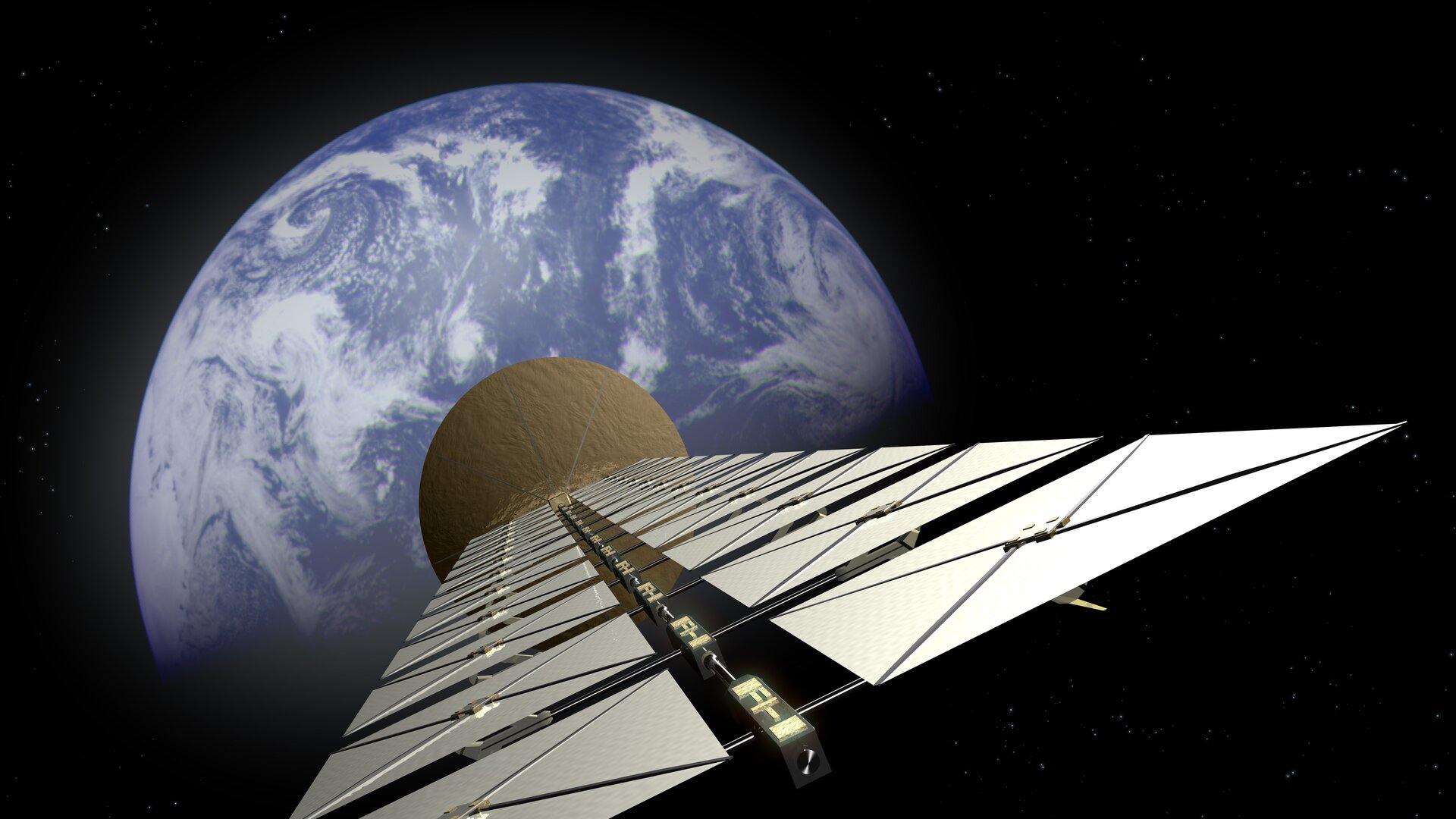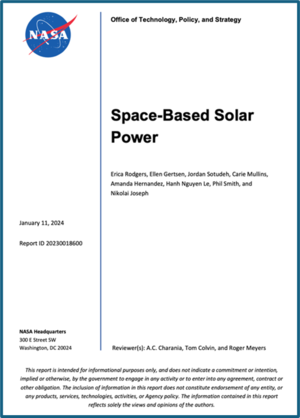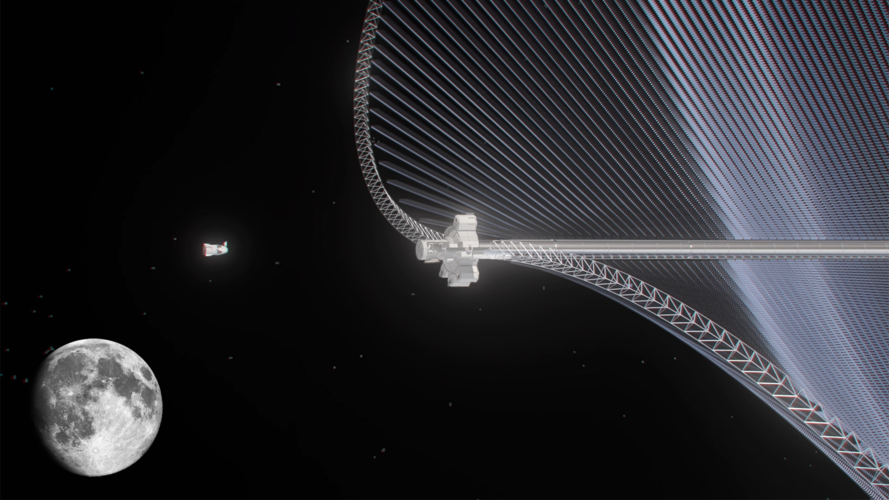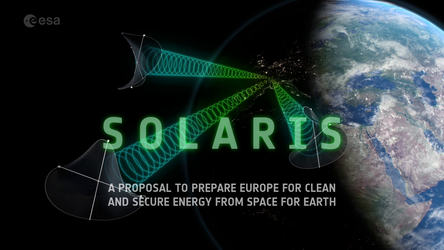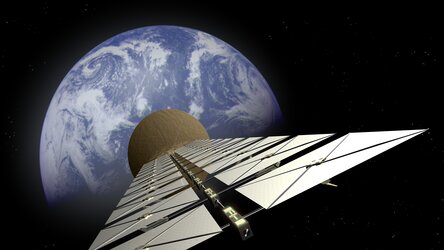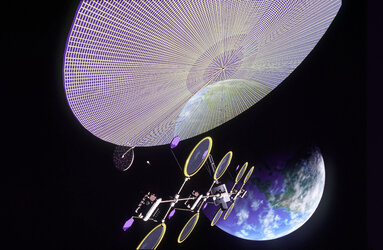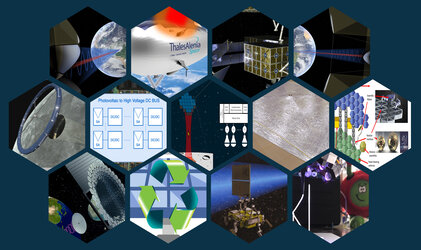Space-Based Solar Power overview
Solar energy generation has grown far cheaper and more efficient in recent years, but no matter how much technology advances, fundamental limitations will always remain: solar panels can only generate power during the daytime, clouds often get in the way and much of the sunlight is absorbed by the atmosphere during its journey to the ground. What if instead we could collect solar power up in space and beam it down to the surface?
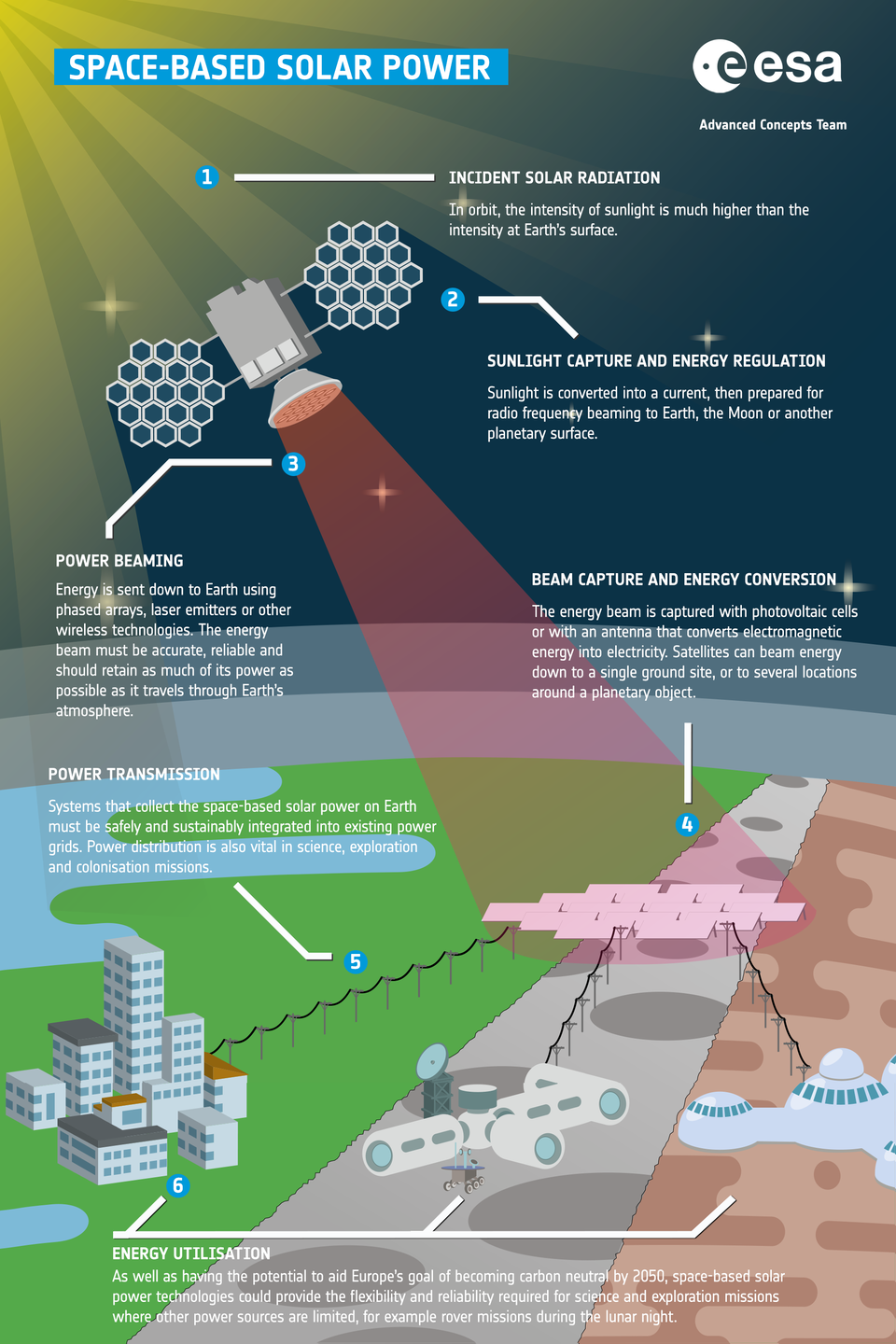
Sunlight is on average more than ten times as intense at the top of the atmosphere as it is down at the surface of the Earth. And up at a sufficiently high orbit sunlight would be available on a continuous basis, to capture all the sunlight available, able to be beamed to receiving stations across the planet, wherever it is needed.
The basic concept has been around for a long time, but has been given fresh urgency by the need for new sources of clean and secure energy to aid Europe’s transition to a Net Zero carbon world by 2050.
Decades of research has led to a diversity of concepts using different forms of power generation, conversion and transmission principles. The so-called reference design transforms solar power into electricity via photovoltaic cells in geostationary orbit around Earth. The power is then transmitted wirelessly in the form of microwaves at 2.45 GHz to dedicated receiver stations on Earth, called ‘rectennas’, which convert the energy back into electricity and feed it into the local grid.
Because the power is transferred wirelessly it will be possible to transfer it to receiver station where it is required, even to the Moon or other planets, where a readily available energy supply will boost our ability to explore these locations.
Space-Based Solar Power, SBSP, is based on existing technological principles and known physics, with no new breakthroughs required. Today’s telecom satellites transmitting TV signals and communication links from orbit are basically power-beaming satellites – except at a far smaller scale of size and power.
The biggest challenge is that – in order to generate optimal, economically-viable levels of solar power – the required structures need to be very large, both on Earth and in space. A single solar power satellite at geostationary orbit might extend more than a kilometre across, with the receiver station on the ground needing a footprint more than ten times larger.
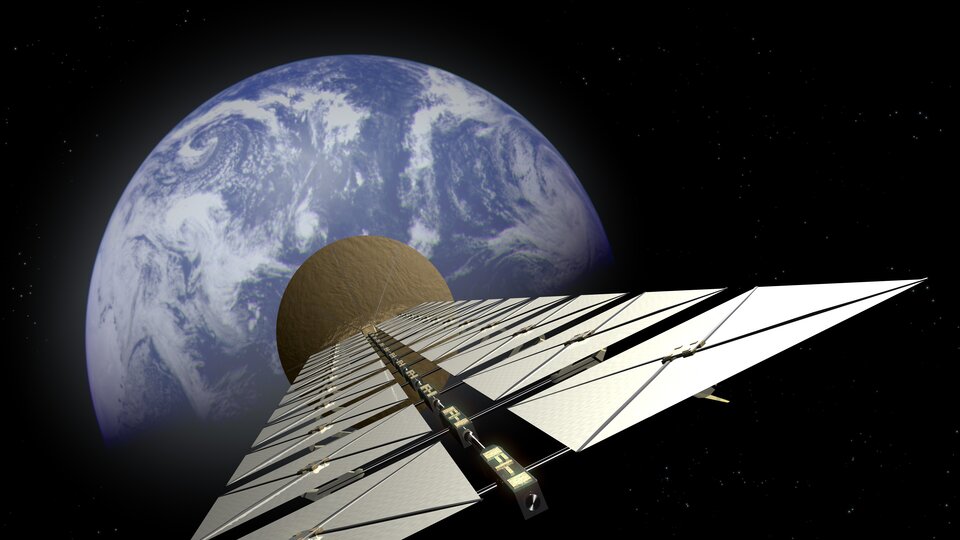
It took dozens of launches to construct the International Space Station in low-Earth orbit, and would likely require an order of magnitude more launches to assemble a solar power satellite that weighs in at many thousands of tonnes. In the past, due to the high costs of launch, solar power satellites were not deemed to be economically competitive with terrestrial solutions.
But worldwide launch costs continue to trend downwards, making such construction economically feasible, and the end-result would be a continuously available source of clean energy. A single solar power satellite of the planned scale would generate around 2 gigawatts of power, equivalent to a conventional nuclear power station, able to power more than one million homes. It would take more than six million solar panels on Earth’s surface to generate the same amount.
More information about Space-Based Solar Power can be found at the following links:
• The Case for an ESA preparatory programme for Space-Based Solar Power for terrestrial energy needs
• How space-based solar power can save the planet – Financial Times (video)


